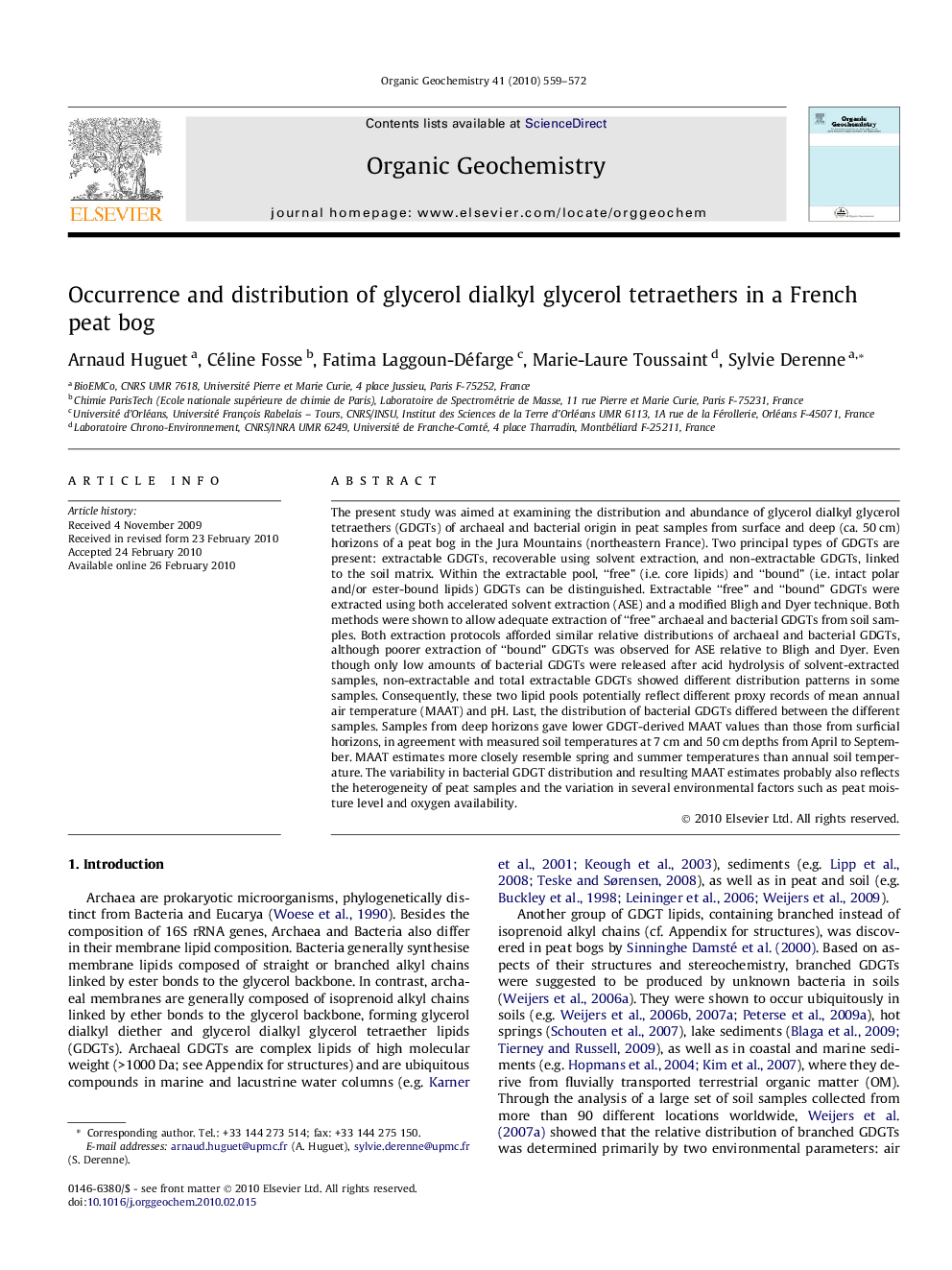| کد مقاله | کد نشریه | سال انتشار | مقاله انگلیسی | نسخه تمام متن |
|---|---|---|---|---|
| 5162714 | 1379747 | 2010 | 14 صفحه PDF | دانلود رایگان |
عنوان انگلیسی مقاله ISI
Occurrence and distribution of glycerol dialkyl glycerol tetraethers in a French peat bog
دانلود مقاله + سفارش ترجمه
دانلود مقاله ISI انگلیسی
رایگان برای ایرانیان
موضوعات مرتبط
مهندسی و علوم پایه
شیمی
شیمی آلی
پیش نمایش صفحه اول مقاله

چکیده انگلیسی
The present study was aimed at examining the distribution and abundance of glycerol dialkyl glycerol tetraethers (GDGTs) of archaeal and bacterial origin in peat samples from surface and deep (ca. 50Â cm) horizons of a peat bog in the Jura Mountains (northeastern France). Two principal types of GDGTs are present: extractable GDGTs, recoverable using solvent extraction, and non-extractable GDGTs, linked to the soil matrix. Within the extractable pool, “free” (i.e. core lipids) and “bound” (i.e. intact polar and/or ester-bound lipids) GDGTs can be distinguished. Extractable “free” and “bound” GDGTs were extracted using both accelerated solvent extraction (ASE) and a modified Bligh and Dyer technique. Both methods were shown to allow adequate extraction of “free” archaeal and bacterial GDGTs from soil samples. Both extraction protocols afforded similar relative distributions of archaeal and bacterial GDGTs, although poorer extraction of “bound” GDGTs was observed for ASE relative to Bligh and Dyer. Even though only low amounts of bacterial GDGTs were released after acid hydrolysis of solvent-extracted samples, non-extractable and total extractable GDGTs showed different distribution patterns in some samples. Consequently, these two lipid pools potentially reflect different proxy records of mean annual air temperature (MAAT) and pH. Last, the distribution of bacterial GDGTs differed between the different samples. Samples from deep horizons gave lower GDGT-derived MAAT values than those from surficial horizons, in agreement with measured soil temperatures at 7Â cm and 50Â cm depths from April to September. MAAT estimates more closely resemble spring and summer temperatures than annual soil temperature. The variability in bacterial GDGT distribution and resulting MAAT estimates probably also reflects the heterogeneity of peat samples and the variation in several environmental factors such as peat moisture level and oxygen availability.
ناشر
Database: Elsevier - ScienceDirect (ساینس دایرکت)
Journal: Organic Geochemistry - Volume 41, Issue 6, June 2010, Pages 559-572
Journal: Organic Geochemistry - Volume 41, Issue 6, June 2010, Pages 559-572
نویسندگان
Arnaud Huguet, Céline Fosse, Fatima Laggoun-Défarge, Marie-Laure Toussaint, Sylvie Derenne,